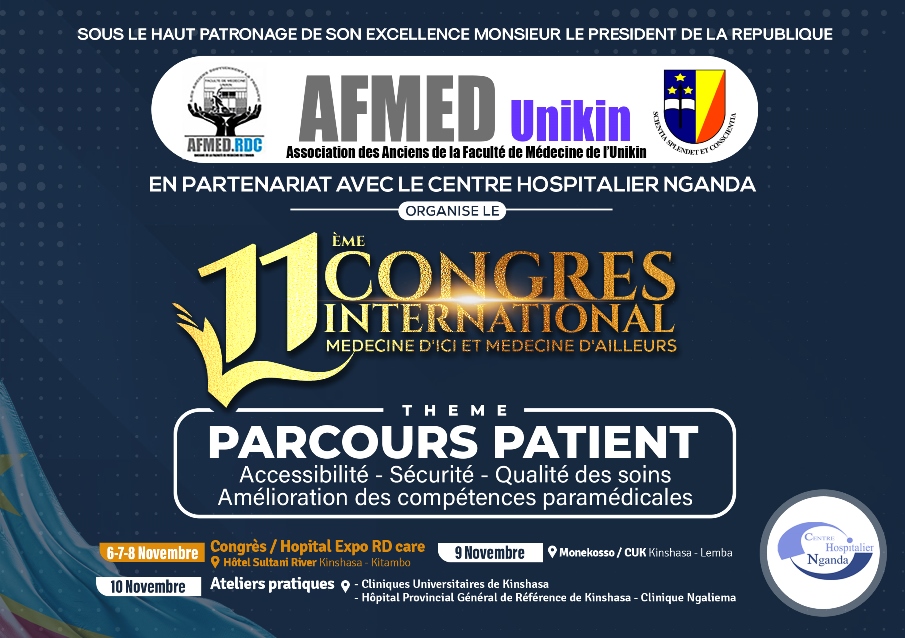Par
Docteur Bernard MUGISHO RUCHOGEZA
Docteur en Médecine
Mémoire présenté et défendu en vue de l’obtention du titre de Spécialiste en Chirurgie Générale.
Directeur : Pr Dr Dieudonné MONINGO MOLAMBA
Année Académique 2017-2018
CARACTERISTIQUES DES PATIENTS ET PROFIL HISTOPATHOLOGIQUE DES PIECES ISSUES DE L’ADENOMECTOMIE DE LA PROSTATE A KINSHASA
RESUME
Contexte : L’hypertrophie bénigne de la prostate est la première pathologie tumorale de la prostate chez l’homme dès la 5è décade ; bien avant le cancer de la prostate. Son diagnostic clinique ne garantit pas sa bénignité. Le taux de PSA-T <4 ng/ml ou situé dans la zone grise n’élimine pas d’emblée un cancer de la prostate. L’examen histopathologique des pièces issues de l’adénomectomie permet de confirmer le diagnostic et son éventuelle association avec d’autres pathologies.
Objectifs : Déterminer les caractéristiques des patients ainsi que celles des pièces histopathologiques issues d’adénomectomie. Etudier les corrélations entre le taux de PSA et le volume échographique de la prostate ; le taux de PSA et l’âge du patient.
Méthodes : Une étude documentaire multicentrique a été réalisée à Kinshasa. Elle a concerné 257 patients opérés pour hypertrophie bénigne de la prostate aux Cliniques universitaires de Kinshasa, à la Clinique de Pointe à Pitre et au Centre médico-chirurgical de Pigeon de 2012 à 2016 ; et, dont les pièces opératoires ont été analysées aux laboratoires d’histopathologie des Cliniques universitaires de Kinshasa et de LEBOMA
Résultats : La moyenne d’âge était de 67,0±8,9 ans ; la dysurie était le signe clinique prédominant (33,9%) ; le taux moyen de PSA-T a été de 4,4±1,2 ng/ml. Il existait une corrélation positive entre le taux de PSA et le volume échographique prostatique hautement significative (p=0,001) ainsi qu’entre le taux de PSA et l’âge du patient (p<0.001). Le taux de détection d’hyperplasie fibro-léiomyo-adenomateuse seule était de 18,3%, associée à la prostatite chronique 32,3%, aux néoplasies intraépithéliales 33,9% et au cancer de la prostate 15,5%.
Conclusion : Toutes les hypertrophies bénignes de la prostate diagnostiquées cliniquement ont été confirmées histologiquement seules, associées aux foyers de prostatite chronique, aux néoplasies intraépithéliales de haut grade ou au Cancer de la prostate.
Mots-clés : hypertrophie bénigne, Prostate, adénomectomie, histopathologie
ABSTRACT
Context: Benign prostatic hypertrophy is the first tumor pathology of the prostate in men from the 5th decade, far before prostate cancer. His clinical diagnosis does not guarantee his benignity. The level of T-PSA <4 ng / ml or located in the gray zone does not eliminate from the outset prostate cancer. The histopathological examination of the pieces resulting from the adenomectomy makes it possible to confirm the diagnosis and its possible association with other pathologies.
Objectives: To determine the characteristics of the patients as well as those of the histopathological specimens resulting from the adenomectomy. To study the correlation between the PSA level and the ultrasound volume of the prostate; and between the PSA level and the age of the patient.
Methods: A multicentric documentary study was conducted in Kinshasa. It involved 257 patients operated on for benign prostatic hypertrophy at Kinshasa University Clinics, Pointe-à-Pitre Clinic and Pigeon Medical-Surgical Center from 2012 to 2016 and whose surgery specimen were analysed at the Kinshasa universitary clinic’s laboratory and the leboma laboratory.
Results: The mean age was 67.0 ± 8.9 years; dysuria was the predominant clinical sign (33.9%); the mean level of T-PSA was 4.4 ± 1.2 ng / ml. There was a positive correlation between PSA level and highly significant prostatic ultrasound volume (p = 0.001) as well as between PSA level and patient age (p <0.001). The detection rate of fibro-leiomyo-adenomatous hyperplasia alone was 18.3%; associated with chronic prostatitis, 32.3%; intraepithelial neoplasia, 33.9%; and prostate cancer, 15.5%.
Conclusion: All clinically diagnosed benign prostatic hypertrophies have been confirmed histologically alone, associated with chronic foci of prostatitis, high grade intraepithelial neoplasia, or prostate cancer.
Keywords: benign hypertrophy, Prostate, adenomectomy, histopathology









